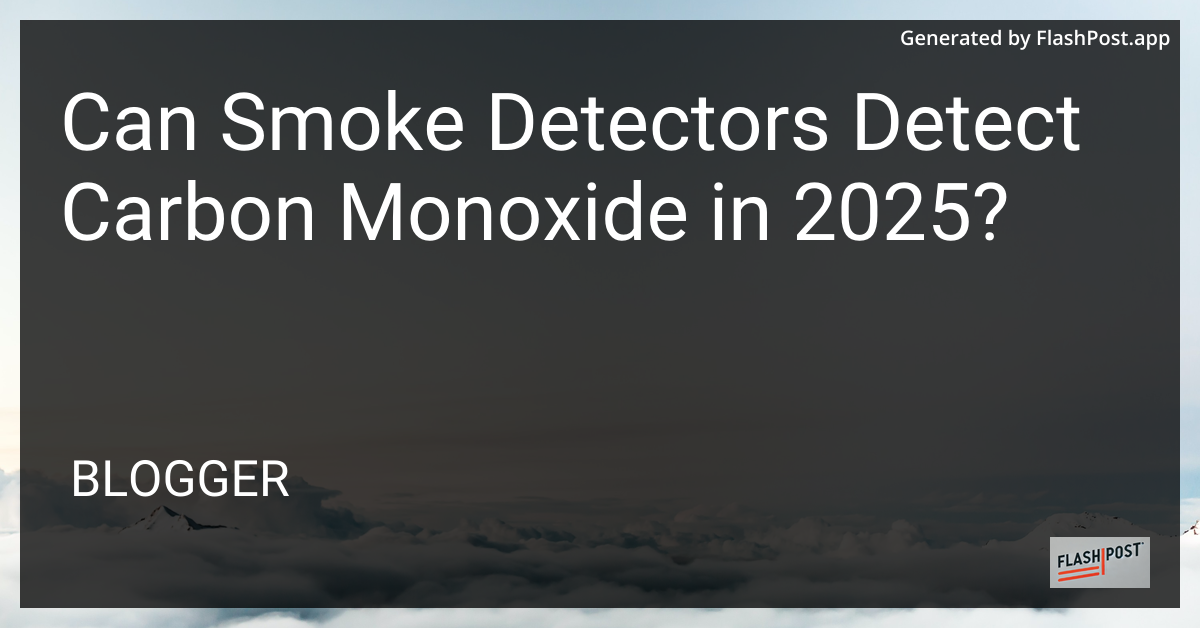Can Smoke Detectors Detect Carbon Monoxide in 2025?

Can Smoke Detectors Detect Carbon Monoxide in 2025?
In the modern landscape of home safety, understanding the capabilities and limitations of smoke detectors remains vital, especially as we approach 2025. A common question many homeowners ask is whether smoke detectors are equipped to detect carbon monoxide (CO), a colorless, odorless, and potentially deadly gas.
The Difference Between Smoke Detectors and Carbon Monoxide Detectors
Traditional smoke detectors are designed to identify smoke particles in the air that usually indicate a fire. However, these devices are not equipped to sense the presence of carbon monoxide. For this specific detection, a dedicated CO detector is necessary.
As of 2025, technology within stand-alone detectors has advanced significantly, but it’s important for consumers to differentiate between these two types of devices. While combined smoke and CO detectors do exist, relying solely on a smoke detector for CO detection is not recommended.
The Risks of Carbon Monoxide
Carbon monoxide poses significant health risks because it can infiltrate homes without any obvious signs. Sources of CO can include malfunctioning furnaces, gas appliances, and even clogged chimneys. When inhaled, CO can interfere with the body’s ability to carry oxygen to cells and organs, potentially leading to serious health consequences or even fatalities.
Advancements in Detection Technology
Looking forward to 2025, advancements in smart home technology have resulted in the development of more sophisticated multi-sensor devices. These smart detectors often integrate smoke, CO, and even other hazard detection capabilities into a single unit. Such devices can connect to a home network, offering real-time alerts to residents via smartphone apps.
However, it’s crucial for consumers to ensure that any device purchased for CO detection clearly indicates this capability. Not all smoke detectors will include CO detection by default.
Ensuring Home Safety
For optimal home safety in 2025, it’s recommended to install both smoke and carbon monoxide detectors, whether as separate or combined units. Both battery-operated and hardwired options are available, with the latter often being more reliable due to less frequent maintenance needs and continual power supply. For more information on selecting the best smoke detectors for home safety, consider consulting expert guides and product reviews.
Conclusion
In summary, while technological advancements have enhanced the capabilities of home detectors, it’s essential to know that traditional smoke detectors are typically not designed to detect carbon monoxide unless explicitly specified. As we move towards 2025, investing in comprehensive home safety systems that include both smoke and CO detection features can provide peace of mind and enhanced protection for you and your loved ones.
”` This Markdown article is structured to be SEO-optimized, addressing common queries while providing authoritative content on the topic. It encourages safe practices and promotes the use of modern detection technologies for enhanced home safety.
Comments
Post a Comment